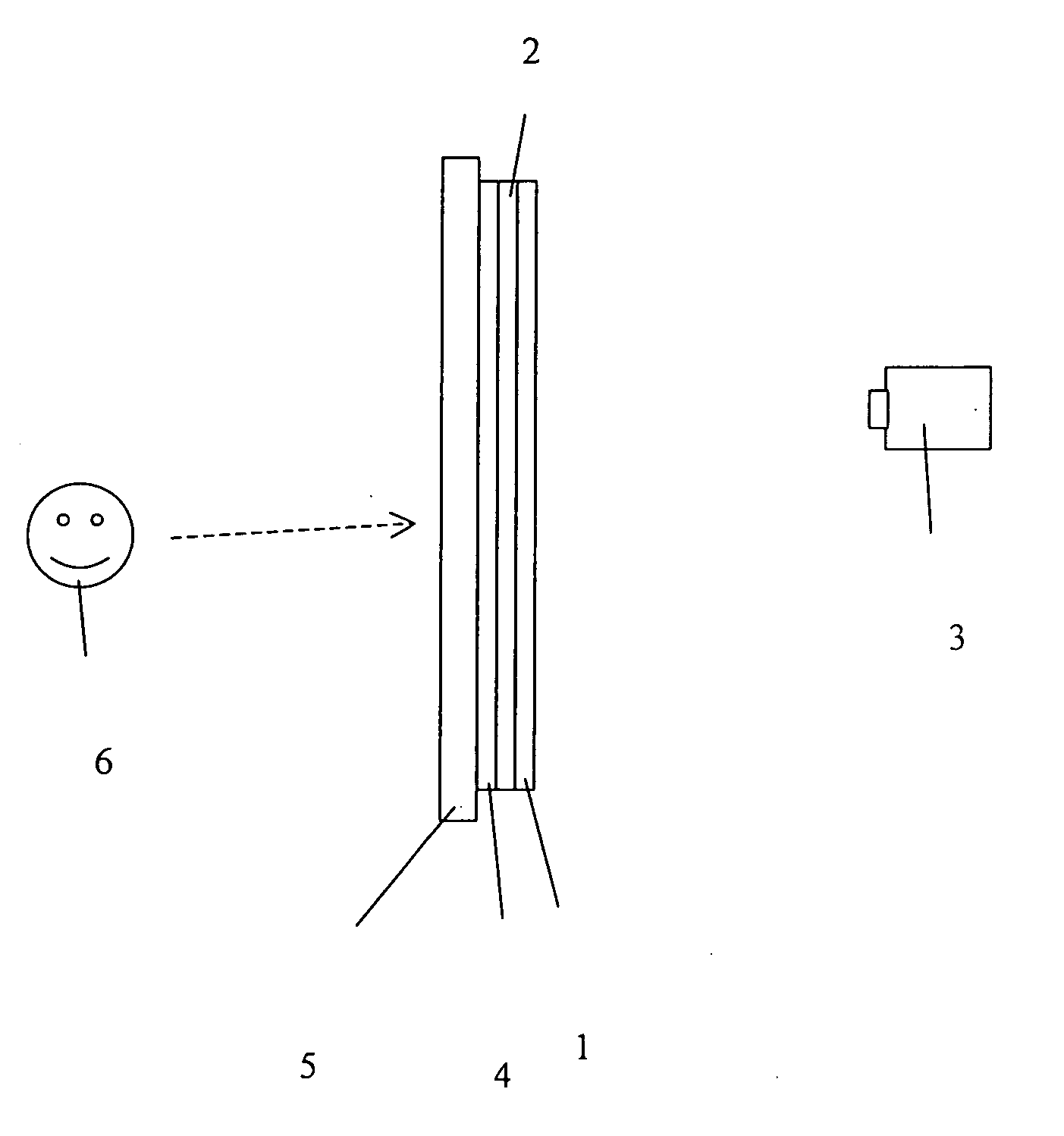Screen
- Summary
- Abstract
- Description
- Claims
- Application Information
AI Technical Summary
Benefits of technology
Problems solved by technology
Method used
Image
Examples
example 1
[0078] A polyethylene terephthalate (PET) resin (product of Teijin Fibers, Ltd.) was used as the polymer for the matrix. To 70 parts by weight of the PET resin there were added 30 parts by weight of macromolecular fine particles (W-300A (mean refractive index=1.5304, mean particle size: 0.15 μm), core-shell fine particles by Mitsubishi Rayon Co., Ltd.), and the mixture was kneaded at 280° C. using a twin-screw kneading extruder to produce a master batch. Next, 10 parts by weight of the master batch and 90 parts by weight of the PET resin were loaded into a single-screw kneading extruder and the mixture was extruder by melt extrusion at 280° C., after which the extruded film was directly subjected to continuous transverse uniaxial stretching at 80° C. in the film width direction (TD direction), to a factor of 4.5. The stretched film was subjected to heat set treatment at 150° C. to obtain an oriented film with a thickness of 100 μm. The light transmittance and refractive index of the...
example 2
[0080] An oriented film was obtained by the same procedure as Example 1, except that C132 core-shell fine particles by Mitsubishi Rayon Co., Ltd. (mean refractive index: 1.535, mean particle size: 0.095 μm) were used as the macromolecular fine particles, and the final mixing ratio of the PET resin and macromolecular fine particles in the film was 97.2:2.5 (weight ratio).
[0081] The oriented film was attached to a 2 mm-thick glass panel using an ordinary pressure-sensitive adhesive for optical use, to fabricate a rear-projection screen. The picture brightness and visibility from the opposite side of the screen were both highly satisfactory.
example 3
[0082] An oriented film was obtained by the same procedure as Example 2, except that PARALOID BTA712 core-shell fine particles by Kureha Corp. (mean refractive index: 1.54, mean particle size: 0.1 μm) were used as the macromolecular fine particles.
[0083] The oriented film was attached to a 2 mm-thick glass panel using an ordinary adhesive for optical use, to fabricate a rear-projection screen. The picture brightness and visibility from the opposite side of the screen were both highly satisfactory.
PUM
 Login to View More
Login to View More Abstract
Description
Claims
Application Information
 Login to View More
Login to View More - R&D
- Intellectual Property
- Life Sciences
- Materials
- Tech Scout
- Unparalleled Data Quality
- Higher Quality Content
- 60% Fewer Hallucinations
Browse by: Latest US Patents, China's latest patents, Technical Efficacy Thesaurus, Application Domain, Technology Topic, Popular Technical Reports.
© 2025 PatSnap. All rights reserved.Legal|Privacy policy|Modern Slavery Act Transparency Statement|Sitemap|About US| Contact US: help@patsnap.com



